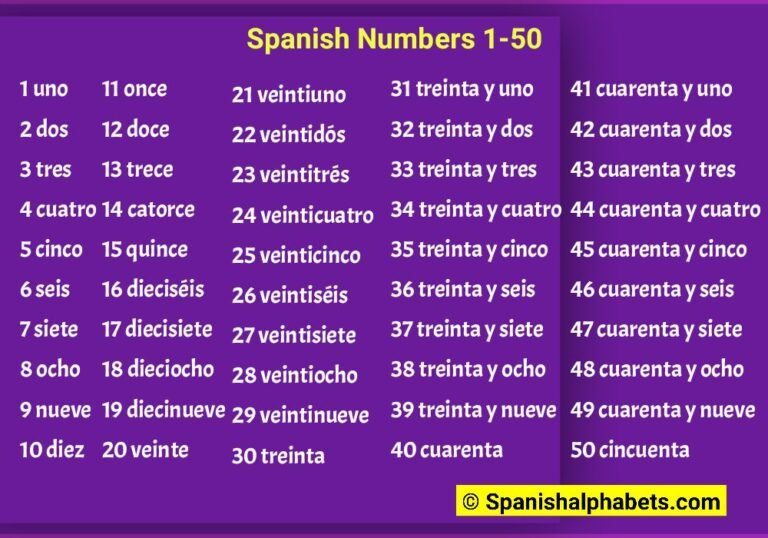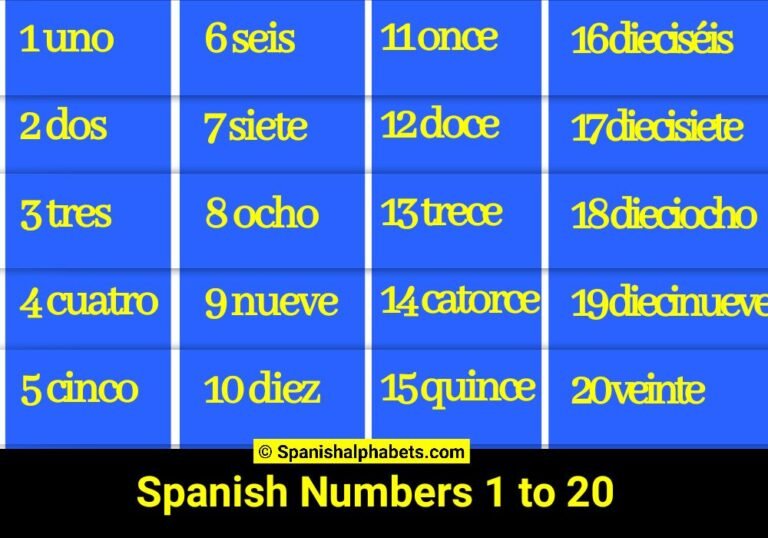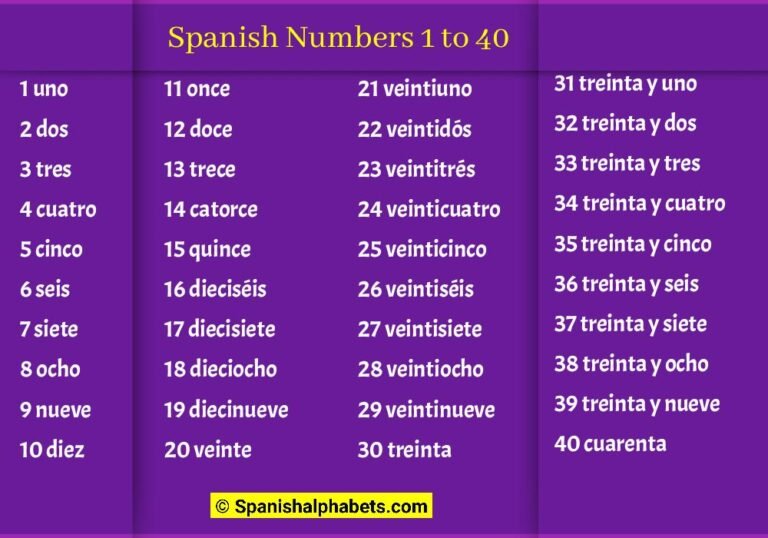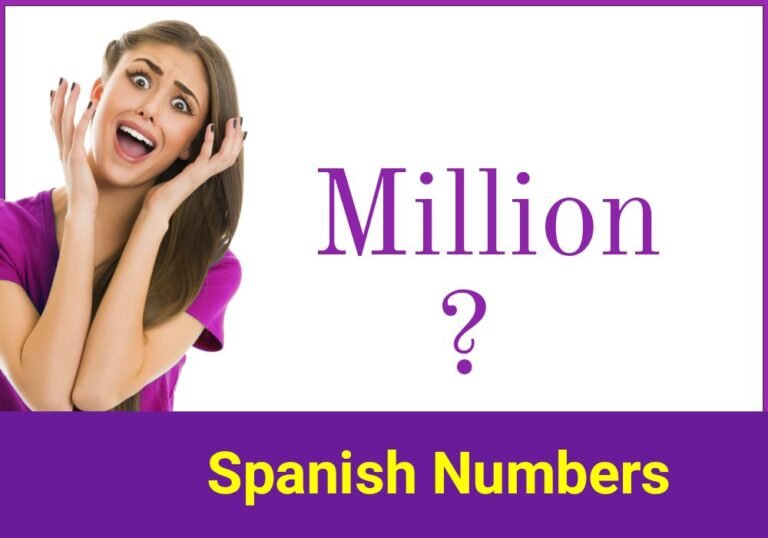This blog is one of the best ways to learn Spanish numbers quickly.
You can easily learn how to pronounce and count 100 to 1000 in Spanish in just a few minutes.
The blog also provides helpful tips on how to use numbers in everyday conversation.
Whether you’re a beginner or an advanced learner, this blog is an excellent resource for anyone wanting to improve their Spanish language skills.
To quickly learn Spanish numbers 100 to 1000, it is essential first to understand the structure of the language.
The number 100 in Spanish is cien, derived from the Latin word centum. The number 1000 in Spanish is mil, which comes from the Latin word for thousand, mille.
Thus, cien and mil are the roots for all the numbers in between. To memorize these numbers, it is helpful to break them down into manageable chunks.
The Easiest Way to Master Spanish Numbers 100 to 1000
There is an easy way to learn Spanish numbers from 100 to 1000. You can use a simple mathematical formula to help you remember the numbers.
The formula is several hundred + “and” + several tens + number of ones.
For example, the Spanish word for “one hundred” is “cien.” So, if you wanted to say “one hundred and twenty-three” in Spanish, you would say “cien veintitres.
Learning Spanish numbers is easier than it may seem. With a bit of practice, you can master them in no time. Here are some tips to help you learn Spanish numbers 100 to 1000.
Start by learning the numbers 1 to 10. Once you have those down, you can move on to the tens (10-19), twenties (20-29), and up to one hundred. It is essential to memorize the numbers to recite them quickly when needed.
Next, focus on learning how to say the numbers in Spanish correctly. Please pay attention to the pronunciation of each number and practice saying them out loud. You can find audio recordings of native Spanish speakers online to help with this.
Finally, practice writing out the numbers in Spanish. This will help solidify your knowledge and help you remember them more easily.
How Many Numbers Are There in Spanish?
In Spanish, there are a total of 21 numbers. This includes the numbers 0-10 and the compound numbers 11-19.
The numbers 20, 30, 40, 50, 60, 70, 80, and 90 are also included in this total. Finally, the number 100 is also counted among the 21 numbers in Spanish.
In Spanish, there are 21 numbers when counting from 0 to 20. This includes the number 15, which is sometimes called quince.
After 20, there are some irregular numbers, like 30 (treinta), 40 (cuarenta), 50 (cincuenta), 60 (sesenta), 70 (setenta), 80 (ochenta), and 90 (noventa).
100 is cien, 200 is doscientos, 300 is trescientos, 400 is cuatrocientos, 500 is quinientos, 600 is seiscientos, 700 is setecientos, 800 is ochocientos, and 900 es novecientos. 1,000 is mil.
Achieve Fluency in Spanish by Learning the Rules for Pronouncing Numbers 100 to 1000
It is essential to learn the rules for pronouncing numbers when attempting to achieve fluency in Spanish.
This is especially true for numbers 100 to 1000. While some simple rules can be followed, there are also many exceptions.
One of the most important rules to remember is that when a number begins with 1, 2, or 3, it is pronounced as if written in words.
For example, one hundred (cien) is pronounced as see-EN and not seen. Two hundred (doscientos) is pronounced as doh-see-EN-tohs and not doh-seen-tohs.
Three hundred (trescientos) is pronounced as trays-see-EN-tohs and not tray-seen-tohs.
To achieve fluency in Spanish, learning the rules for pronouncing numbers 100 to 1000 is essential.
These rules are not difficult to learn but essential to communicate effectively with native speakers.
By learning these rules, you will be able to increase your fluency and comprehension of the Spanish language.
Spanish numbers 100 to 1000: how to write them
The Spanish numbers 100 to 1000 are written as follows: cien, doscientos, trescientos, cuatrocientos, quinientos, seiscientos, setecientos, ochocientos, novecientos.
For numbers above 1000, the number of thousands is added before the word “mil.” So, for example, 1500 would be escrito como “un mil quinientos.
Here are the numbers 100 to 1000 in Spanish:
- 100 is cien
- 200 is doscientos
- 300 is trescientos
- 400 is cuatrocientos
- 500 is quinientos
- 600 is seiscientos
- 700 is setecientos
- 800 is ochocientos
- 900 is novecientos
- 1000 is mil.
Spanish numbers are easy to learn, and you’ll write them quickly with some practice. Here are the numbers 100 to 1000 in Spanish, along with how to write them.
Remember that in Spanish, the period (or full stop) is always used after the thousands place. For example, 1.000 in Spanish is one thousand, while 1,000 in Spanish is ten thousand.
Spelling out Spanish Numbers from 100 to 1000
The following is a guide on how to spell out Spanish numbers from 100 to 1000. When writing out large numbers in Spanish, using a comma (,) every three digits is standard.
This applies to numbers greater than 999 as well. For example, 1,000 would be written as un mil and 1,001 as un mil uno.
Some simple rules are to follow when spelling out Spanish numbers from 100 to 1000.
First, remember that in Spanish, unlike English, the decimal point goes before the number.
So, 10.01 in English would be written as 10,01 in Spanish. Second, after the decimal point, treat each number as if it were its word.
For example, 101 would be spelled ciento uno (one hundred one), while 123 would be ciento vein titers (one hundred twenty-three).
When writing out numbers from 100 to 999, you will combine cardinal (counting) numbers and ordinal (order) numbers.
For example, to write “one hundred fifty-five,” you would say “ciento cincuenta y cinco” (literally “one hundred fifty and five”).
How Americans Can Learn Spanish Numbers 100 to 1000
It’s no secret that Spanish is one of the most widely spoken languages in the world. There are currently more than 400 million Spanish speakers worldwide.
Despite this, however, many Americans remain largely ignorant of the language. This is particularly true when it comes to numbers.
Fortunately, learning Spanish numbers 100 to 1000 is easier than it may seem. With a bit of practice, you can master them quickly.
Here are a few tips to get you started:
- Listen to audio recordings of native Spanish speakers counting from 100 to 1000. This will help you get a feel for the rhythm and flow of the language.
- Write out the numbers in Spanish, 100 to 1000, several times. This will help embed them in your memory.
Conclusion Points
If you’re learning Spanish, you must know how to count Spanish from 100 to 1,000. Here are some tips to help you learn the numbers.
One way to learn the numbers is to break them down into groups of tens. For example, 100 is diez + cero (10 + 0), and 110 is diez + diez (10 + 10).
To make it even easier, you can think of 100 as simply cien (100), and then all you have to do is add the other numbers on top.
Two hundred would be doscientos (2 x 100), 300 would be trescientos (3 x 100), and so on, up to 1000 which is mil (1000). Remembering this will help you quickly and easily count from 100 to 1,000 in Spanish.
FAQs
Spanishalphabets.com’s FAQs section provides quick and easy answers to common questions about Spanish numbers 100 to 1000. Our FAQs are designed to help you learn more about Spanish numbers and provide tips and tricks for everyday use.
With our FAQs, you can learn how to count from 100 to 1000 in Spanish, pronounce Spanish numbers correctly, and use them in different situations.
Question (1) – How do you write 100 to 1000 in Spanish?
Answer – In Spanish, the number 100 to 1000 is written as cien, 200 as doscientos, 300 as trescientos, 400 as cuatrocientos, 500 as quinientos, 600 as seiscientos, 700 as setecientos, 800 as ochocientos, 900 as noventa, and 1000 as mil.
Question (2) – How do you count from 100 to 200 in Spanish?
Answer: Counting from 100 to 200 in Spanish is relatively simple. First, one would need to identify the starting number, which in this case is 100.
Next, one would need to determine the ending number, which is 200. Finally, one needs to count up from the starting to the ending number using Spanish numerals.
Question (3) – How do you say 1000 in Spanish?
Answer: The number 1000 in Spanish is “mil.” It is pronounced like the English word “meal” but with a more robust “i” sound. 1000 is sometimes pronounced as “Milla,” closer to the English word “mile.”
Question (4) – How do you count 100s in Spanish?
Answer – The number 100 in Spanish is “cien.” To count 100s in Spanish, start with “cien” and continue counting by adding 1-100 after “cien.”
For example, if you were counting to 200, you would say “cien, uno, dos, tres, cuatro, cinco,” and so on.
Question (5) – Why is Learning Spanish Numbers Important?
Answer: There are a few reasons why learning Spanish numbers is essential. First, they can be used in everyday situations such as telling time, counting money, and measuring items.
Second, they can be helpful when traveling to Spanish-speaking countries. Knowing how to count in Spanish will allow you to communicate basic needs and understand signs and labels.
Finally, learning numbers in Spanish can improve your overall language skills. By studying numbers, you will learn new vocabulary and grammar rules.
Question (6) – Why do Spanish speakers love their numbers from 100 to 1000?
Answer: There are a few reasons why Spanish speakers love their numbers from 100 to 1000. First, the numbers have many syllables, making them fun to say.
Second, the numbers are all close together, so it’s easy to remember what comes next. Third, the numbers have a lot of repetition, making them easy to learn.
Fourth, numbers are often used daily, so they’re always relevant. Finally, the numbers sound cool!
Question (7) – Why are there gaps in Spanish numbers from 100-1000?
Answer: There are gaps in Spanish numbers from 100-1000 because the number system is based on powers of 10.
In other words, each number is 10 times the previous number. So, when you get to 100, it’s just 10 x 10, or 10 squared.
But when you get to 1000, it’s 10 x 10 x 10, or 10 cubed. That’s why there are gaps in the numbers – they’re not all powers of 10.






